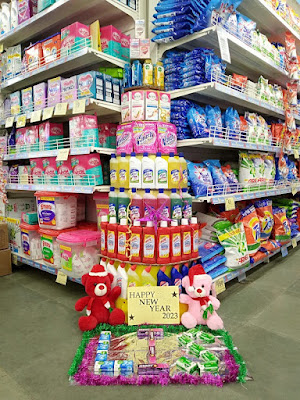Stepping in 2024 with a Wise Visual Merchandising Plan!
Visual merchandising designs and displays products in retail to attract shoppers' attention and drive sales. This is achieved by creating a display that showcases the product's appearance, features, benefits, and uses visually appealingly. Larger companies typically have sales associates who work closely with the retail marketing team to create displays that align with the overall brand image and goals. Independent retailers can control their shows without being constrained by brand rules.
Most importantly, visual merchandising is about more than just making products look good. The idea is to present this in a way that drives real sales growth. We offer in-store visual merchandising displays, mannequins, signage, interactive experiences, and more. We will consider it from the point of view of how it is displayed. This is undoubtedly true. But with the rise of omnichannel retail, solid visual merchandising must also extend online. Canal. Graphic merchandising designs and displays products in retail to attract shoppers' attention and drive sales.
Types of Visual Merchandising
Most brands and retailers have some level of visual merchandising. But if you want to improve your point of sale, how can you use different sales methods at the end of the deal?
In this section, we will look at several types of visual merchandising and how to use them. Think about the products you already use and what you can add to the mix to tell your product and brand story differently.
Interactive display
Touchscreen technology is a great way to draw people to a particular screen and learn more about a product or product line. This could be a choose-your-own-adventure game or involve virtual/augmented reality.
SHOP WINDOW
Making a good first impression on your customers can pay dividends for your brand. A window display that grabs your customers' attention and piques their interest as they enter your store allows them to take a deeper look at your offer.
Storefronts are infinitely flexible and can be used in various ways to convey valuable messages about new products and promotions.
Mannequins are an essential part of almost any clothing store, and for good reason. They show consumers how the clothes look on people rather than forcing everyone to try them. But even though they've been around for a while, they still need to be in style.
Shoppers always come into stores and buy things they can't live without. Therefore, they do not need to advertise it. Instead, use this opportunity to drive customers to other products they have not seen. Are your customers looking for value for money at an affordable price? Are they looking for a sense of luxury and distinction? Are they trying to keep up with the latest fashion trends?
Your visual merchandising strategy should consider all of this when planning the visual look of your stores and digital channels. Tell me a story; talk to me.
Consumers decide immediately if they want to look at something in more detail and if they want to keep walking or scroll. That's why it's so important to tell a story that starts with a hook. Once interested, show them what they'll get if they buy the item.
Be creative and get more than just your customers' attention. Can we use sound, touch, smell, or taste to create a multidimensional experience?
Add images that help connect your customers' lives with your product. For example, if your product is a blender, you could show a parent mixing a smoothie with their child in the kitchen. These images create an emotional connection with customers and increase the likelihood of a purchase. You need to constantly monitor your store to know where sales are happening and where they aren't so you can continue to grow and change your strategy.
You need to constantly monitor your store to know where sales are happening and where they aren't. Think light, color, height, and mood.
It's essential to use store design and visual merchandising to create an atmosphere for feeling.
Lighting can direct shoppers' attention to where they want to go. Bright colors on a neutral background can attract a lot of attention. It is essential to focus on the customer. Where do your customers' eyes go when they first see your display? Need help with where to look? You need to look at the show from the customer's perspective. It is essential that every potential client, no matter how tall or small, can be seen the way they want to be seen. Interactive displays can tell people something interesting that makes them stop and listen. The type of music played in your store says a lot about your products and brand. Find cross-selling opportunities.

.webp)



Comments
Post a Comment